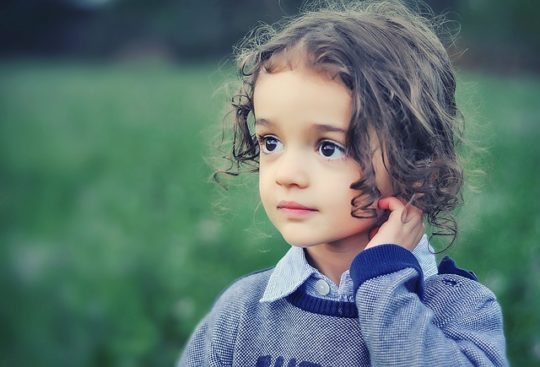
The temperatures are warming and summer camps are fast approaching for your children. Do you know what else is approaching? Head lice. As we head into warmer weather, the creepy, little blood-suckers love to latch on to any scalp they can reach.
It pays to be prepared and know what to do if your child becomes infested with head lice. It can happen any time children are in close contact with one another and it has nothing to do with cleanliness or the state of your home. In fact, lice prefer clean scalps!
Choosing a treatment can be a difficult choice. There are several different lice treatments on the market, from prescription drugs to over-the-counter chemical treatments. You can also find several chemical-free remedies as most of us would like to limit exposure to nasty chemicals, and for good reason!
Lice treatments can be toxic
Let’s start by looking at the types of treatments that are usually found in a pharmacy or prescribed by a doctor. Common treatments include:
- Pyrethrin – These pesticides are derived from chrysanthemums and kill lice, but not the nits (eggs).
- Permethrin – This is a synthetic version of pyrethrin.
- Malathion – Kills lice and some of their eggs.
- Benzyl alcohol – A lotion that suffocates lice, but not the nits.
The problem with ALL of these treatments is that they’re not without risk to your child. The primary risks are:
- Rashes
- Migraines
- Respiratory Issues
- Seizures
Let’s explore this more closely. If we dig into FDA reports on adverse events and other studies done on the key chemical ingredients found in common lice treatments, we can find a host of negative impacts. Pyrethroids have been known to cause reactions from rashes, to migraines, to respiratory issues, while there are also questions about their impact on reproductive health.
Additionally, pyrethrins and pyrethroids are known to disrupt the central nervous system, causing anything from seizures to loss of consciousness, particularly at higher exposures. Lindane lotion, a prescription-based treatment has been linked with seizures and death in some extreme cases.
The bottom line is that, at best, your child may suffer no ill effects at all. At worst, these treatments can be quite toxic. Is it worth the risk?
Lice treatments can be ineffective
Another critical risk with these common, chemical-based treatments is that they often don’t work. Treatment-resistant super lice have become a prevalent problem in most states. In fact, around 99.6% of lice have developed a resistance to pesticide treatments.
This is where the risk of toxicity can go together with super lice. Over-exposure to pesticide treatments is a key cause of adverse reactions. So, you try a chemical treatment on your child and find it hasn’t worked. What do most people do? Try again. Children can end up over-exposed to the treatment and fighting off the ill effects.
When dealing with super lice, you’re unlikely to get anywhere with some of these more traditional over-the-counter treatments. In fact, we’d suggest that if your child is going to summer camp this year, don’t let the camp use potentially toxic treatments on him or her. Fortunately, there are effective alternatives you can pack in your child’s bag, just in case.
Non-toxic lice treatments
If you were to Google natural lice treatments, you’ll find a range of suggestions. Some of these will not be effective, so be careful about what you choose. Mayonnaise in the hair? That will just make your child smell like a ham sandwich.
Mayonnaise and other hair-coating treatments (such as coconut oil) can help to suffocate lice, however they have no impact on the nits (lice eggs) laid by the lice. This means that in 7 – 9 days, when those eggs hatch, your child will be itching again.
One of the most effective treatments is combing. While painstaking, when done properly, combing removes everything, including those pesky nits. In fact, combing has been reported to be the safest method for removing lice. Researchers suggest using a fine-toothed lice comb in conjunction with a lubricant to comb out the lice and eggs. You could also use it with a Lice and Egg shampoo, to easily break the bonds the nits and lice form with hair and scalp.
If you want your combing efforts to be easier and even more effective, then an electric lice comb such as RobiComb can provide the answer. This works by safely zapping and killing the lice on contact so that the comb easily removes them. There’s no need to lubricate hair to use it – the combs work best on dry hair making them one of the most convenient and least messy lice removal options.
Head lice prevention
If there are head lice around and you want to prevent an infestation, or, if you want to prevent a recurrence once lice are gone, look at preventative measures.
For starters, anything that has been in contact with lice-infested heads should be carefully laundered or quarantined for several days, until you’re sure lice will be dead. Head lice need a scalp to survive and will die within three days of isolation.
Secondly, keep long hair tied up to reduce risk of exposure. Lice don’t jump around, but little heads playing close together form an easy bridge. Tying hair back helps immensely.
Lastly, try using a non-toxic lice repellent spray. This is handy to keep at home or to pack into the summer camp bag for a daily spritz. With a plan for treatment and prevention, you can keep lice at bay without exposing your children to toxic chemicals!


















